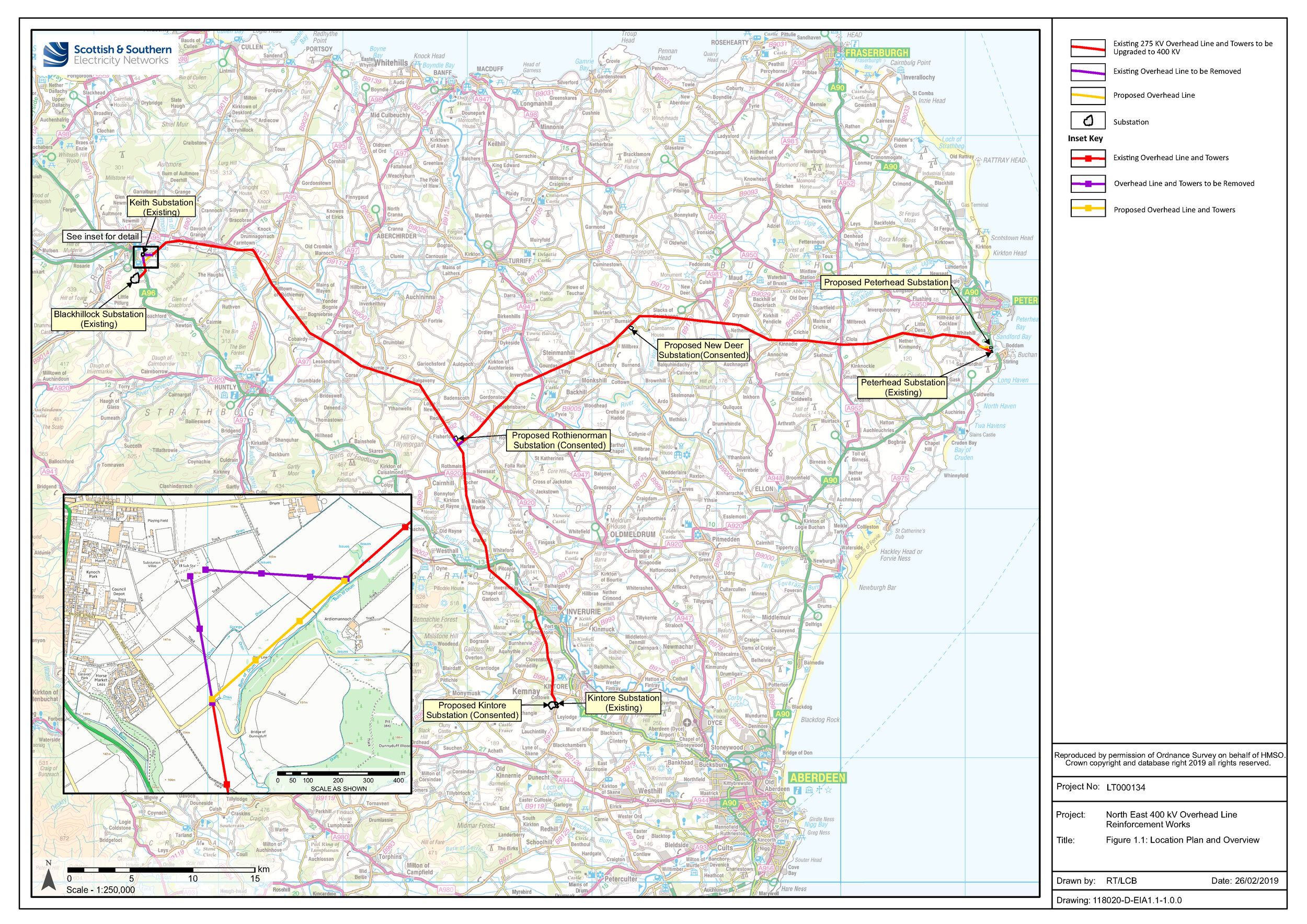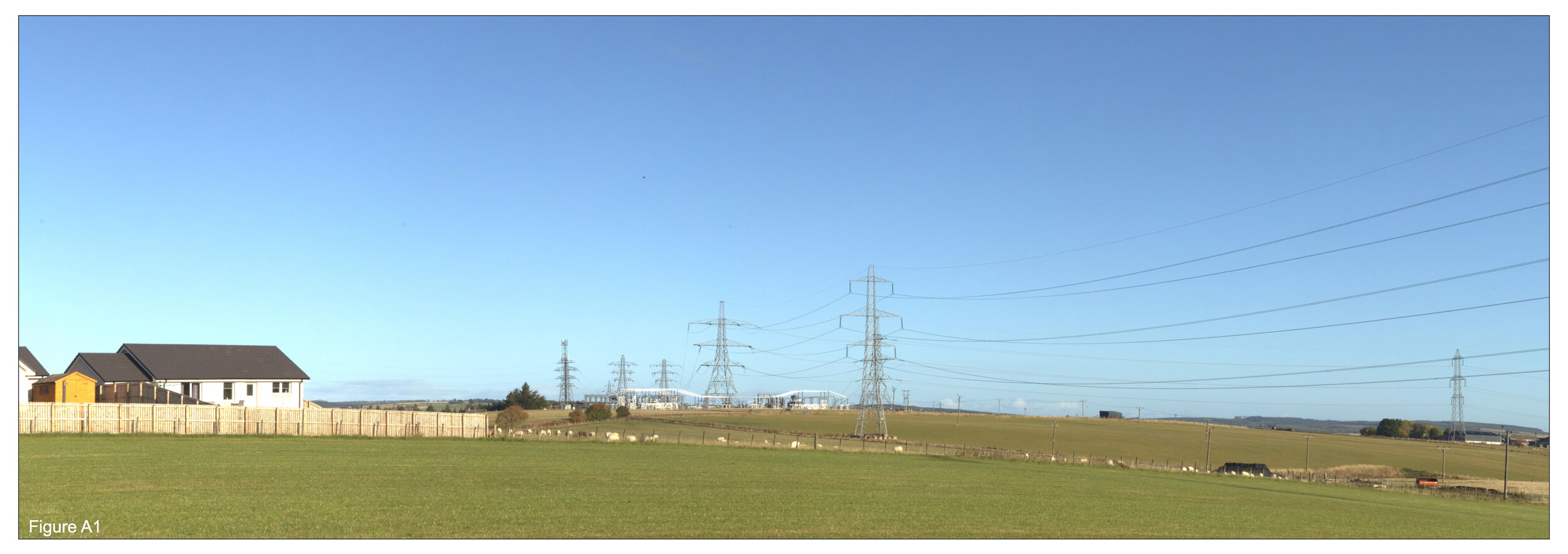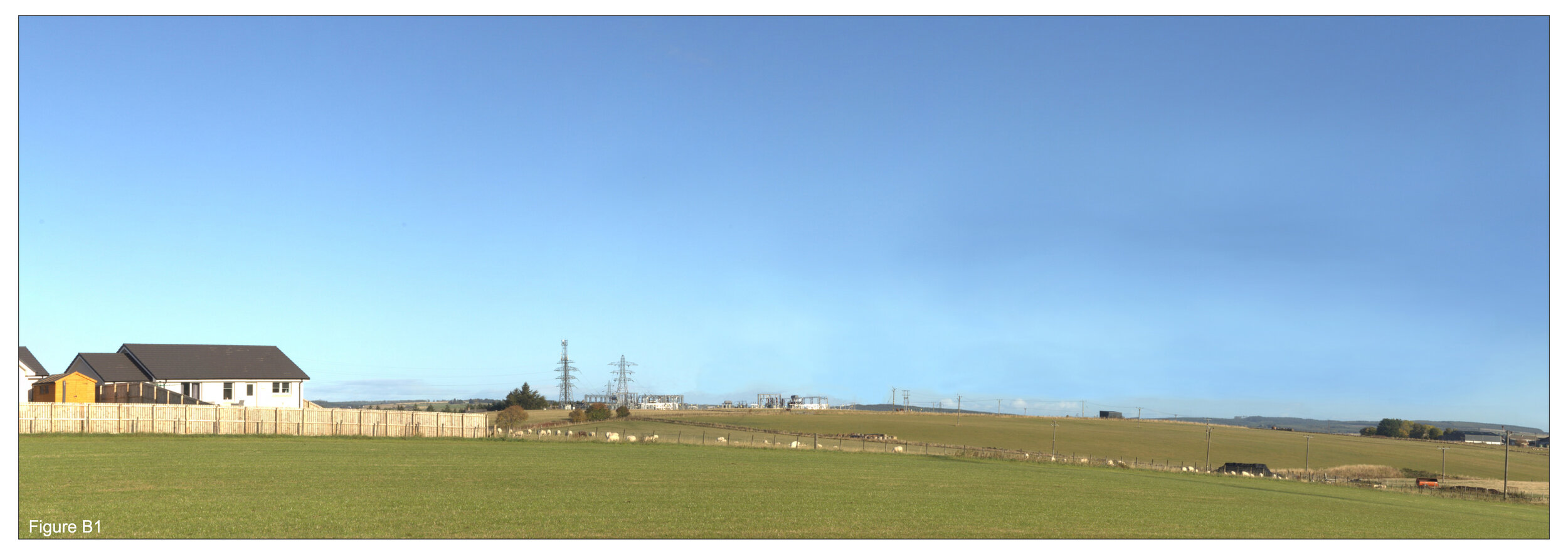ASH co-ordinated and produced an Environmental Impact Assessment (EIA) Report of the planned reinforcement of the existing overhead line between substations at Blackhillock, Kintore and Peterhead to enable operation at 400 kV
Scottish Hydro Electrical Transmission plc are reinforcing the existing North East transmission line between Blackhillock, Kintore and Peterhead from 275 kV to 400 kV. The project includes replacement of the conductors, insulators and fittings for operation at a higher voltage, reinforcement works to some of the towers and their access tracks, and reconfiguration of the overhead line on the outskirts of Keith.
These works are required in advance of a planned increase in electricity generation capabilities of the northeast of Scotland. Connections are required for the Moray East offshore wind farm, Moray West offshore wind farm, and the North Connect HVDC Interconnector. Peterhead Power Station will also undergo works to increase its generating capacity to nearly triple its current output.
Key Tasks
Site options appraisal
Landscape and visual impact assessment
Photomontages
Landscape mitigation
Stakeholder consultation
What we did
ASH undertook an Environmental Impact Assessment (EIA) for the North East 400 kV Reinforcement Works and produced an EIA Report, submitted in support of a section 37 application (Electricity Act 1989) for consent.
ASH carried out the following stages of work in support of the application for consent:
Scoping Briefing Note: preparation of a brief report outlining the nature and scope of the works, the need for the development, the proposed scope of the EIA, and a description of measures to mitigate likely effects on the environment;
Consultation with statutory consultees: carried out through meetings and email correspondence, supported by the Scoping Briefing Note. This gave consultees early notification of the intended application and an understanding of its nature, allowing effective communication from an early stage and throughout the project timeline;
Scoping Report: issued to the Scottish Government’s Energy Consent Unit following careful consideration of the likely significant environmental effects associated with the works, and informed by comments made from earlier consultations;
Attendance at public exhibitions: public exhibition events held by Scottish Hydro Electric Transmission plc were attended by ASH in order to answer queries from, and provide expert advice to, visiting members of the public. Support and advice were also given in production of the exhibition materials to ensure clear, accurate information was available for viewing; and
EIA Report: production of an EIA Report. This also involved coordination and oversight of specialist consultants for input into relevant assessment topics, including:
Visual Impact Assessment: as the majority of the line is being re-conductored, potential visual impact over the long term was limited and therefore a visual impact assessment was focussed on the reconfiguration of the overhead towers on the outskirts of Keith and views from properties, Core Paths and roads;
Habitats, protected species and birds: potential for effects on ecology and ornithology due to construction activities and disturbance was assessed. Many of the effects identified are proposed to be mitigated through site specific Construction Environmental Management Plans and Species Protection Plans (SPPs). Outline SPPs were included in the EIA Report;
Cultural Heritage: consideration of potential effects on cultural heritage was based on previous field surveys and archaeological data sets, and considered both designated and non-designated heritage assets; and
Hydrology, Hydrogeology, Geology and Soils: an assessment of the potential effects on soils, geology and the water environment within the vicinity of the works was carried out, including potential effects on private water supplies;
Electric and magnetic fields (EMF): EMF will increase as the voltage of the line increases. An assessment was carried out to determine exposure levels, concluding these would be within current guidelines; and
Electromagnetic interference (EMI): Conductors can produce interference for devices which use radio waves. The EIA considered potential effects of EMI.
The EIA Report was submitted in February 2019 and determination of the application is currently awaited.
Find out more
We’re always happy to answer your questions. If you’d like to find out more about the services we can offer for your project, you can email us on info@ashglasgow.com or call 0141 227 3388.








